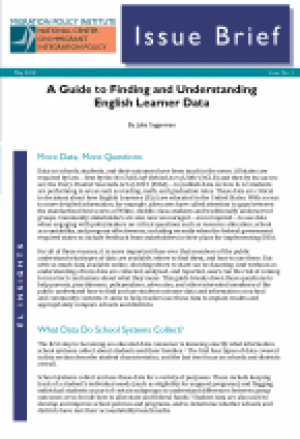A Guide to Finding and Understanding English Learner Data

In recent years, education data have become both more easily accessible and more important than ever to decisions about K-12 policies and practice. Under the Every Student Succeeds Act (ESSA), states are required to publish data on how students, including English Learners (ELs), are performing in areas such as reading, math, and graduation rates. And knowing where to find and how to use these statistics can be key for community stakeholders seeking to engage policymakers on critical questions of resource allocation, school accountability, and program effectiveness.
With more data available online, deciding where to begin can be daunting. And without an understanding of how data are collected, analyzed, and reported, data users run the risk of coming to incorrect conclusions about what they mean. This guide aims to help parents, practitioners, policymakers, advocates, and other interested members of the public understand how to access and use data about ELs—be it student outcome data or information about the school context.
It answers questions such as: What information do U.S. schools collect about students? What national and state-level sources can be used to find data on ELs? And what can—and can’t—these data tell us? The guide also highlights some challenges data users may face when comparing groups of ELs to other student subgroups and across states, data sources, and time.
